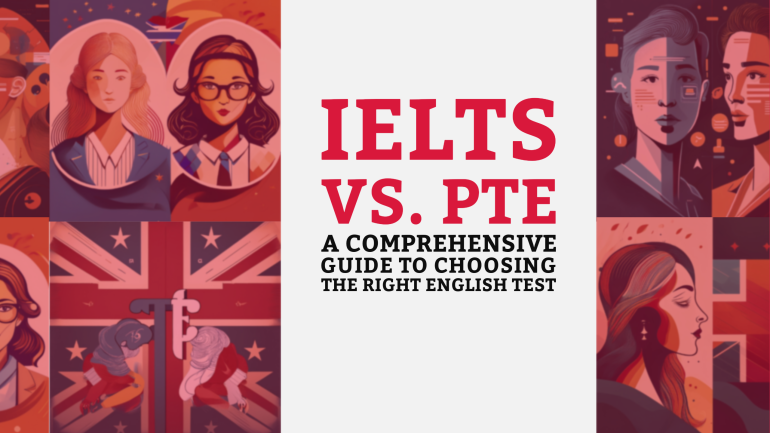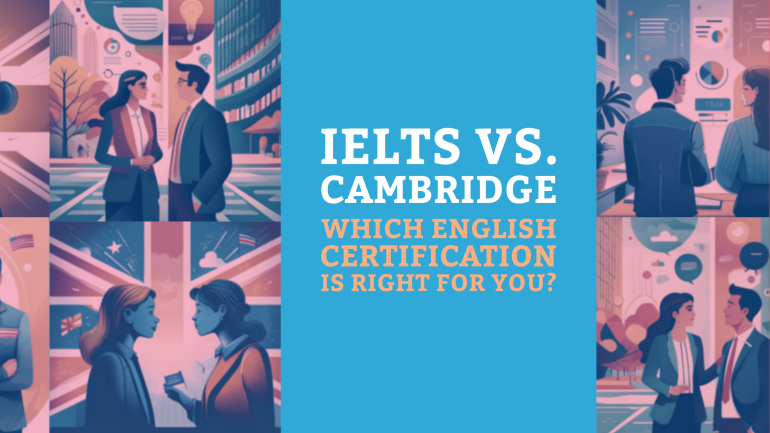Table of Contents
You may also interested:
TL;DR: IELTS vs PTE – Which Test is Right for You?
- Test Formats: IELTS offers both paper-based and computer-based formats with face-to-face speaking, while PTE is fully computer-based with AI scoring.
- Scoring Systems: IELTS uses a band scale (1-9), while PTE scores range from 10 to 90, with automated assessments for objectivity.
- Results Turnaround: PTE provides results within 48 hours, whereas IELTS can take up to 13 days for paper-based tests.
- Global Acceptance: IELTS is widely recognized, especially in the UK, while PTE is gaining traction in Australia, New Zealand, and increasingly in North America.
- Preparation Strategies: Both tests require dedicated preparation; utilize official resources and practice tests tailored to each exam’s format.
Are you unsure whether to take the IELTS or PTE for your English proficiency test? Selecting the right exam is a crucial decision that can significantly impact your academic and professional aspirations abroad. Both the International English Language Testing System (IELTS) and the Pearson Test of English (PTE) are globally recognized assessments, but how do they differ, and which one is the best fit for you?
In this comprehensive guide, we’ll delve into the key aspects of both tests, comparing their formats, scoring systems, acceptance rates, and more. By the end, you’ll have a clear understanding of which exam aligns with your goals and strengths.
Understanding the Importance of English Proficiency Tests
With the growing globalization of education and employment, English proficiency tests have become essential. Over 3.5 million candidates1 take the IELTS annually, while the PTE has rapidly gained traction due to its computer-based format and quick results turnaround. These exams assess your ability to understand and use English in academic and real-life contexts, which universities and immigration authorities rely on to gauge your readiness for study or work in an English-speaking environment.
Test Overviews
IELTS: International English Language Testing System
The IELTS is one of the most established English language assessments, jointly managed by the British Council, IDP: IELTS Australia, and Cambridge Assessment English2. It evaluates your proficiency across four skills: Listening, Reading, Writing, and Speaking.
Test Formats:
- IELTS Academic: For those applying for higher education or professional registration.
- IELTS General Training: For individuals migrating to English-speaking countries or undertaking work experience or training programs.
PTE: Pearson Test of English
Introduced by Pearson PLC Group, the PTE Academic is a computer-based test that uses advanced AI technology for assessment3. It also tests the four language skills but emphasizes real-life, academic English.
Key Features:
- Integrated tasks that assess multiple skills simultaneously.
- Computerized scoring system ensuring impartial results.
- Quick delivery of scores, typically within 48 hours.
Scoring Systems Explained
IELTS Scoring System
- Band Scale: Scores range from Band 1 (Non-user) to Band 9 (Expert user).
- Individual Skill Scores: Each of the four skills is scored individually.
- Overall Band Score: The average of the four skills, rounded to the nearest half band.
Example: If you score 7.5 in Listening, 7.0 in Reading, 6.5 in Writing, and 7.0 in Speaking, your overall score would be 7.0.
PTE Scoring System
- Global Scale of English: Scores range from 10 to 90 points.
- Automated Scoring: Uses algorithms that assess content, form, and language use.
- Integrated Skills: Some tasks contribute to multiple skills scores.
Example: A Speaking task might contribute to both your Speaking and Listening scores3.
Exam Formats in Detail
IELTS Exam Format
- Total Duration: Approximately 2 hours and 45 minutes.
- Sections:
- Listening: 30 minutes (plus 10 minutes transfer time for paper-based tests).
- Reading: 60 minutes.
- Writing: 60 minutes.
- Speaking: 11–14 minutes (may occur on a different day).
Test Delivery:
- Paper-based or Computer-based: Choose based on your preference.
- Speaking Test: Conducted face-to-face with a certified examiner, allowing for natural interaction.
PTE Academic Exam Format
- Total Duration: Approximately 2 hours (reduced from 3 hours in November 2021)4.
- Sections:
- Part 1: Speaking & Writing: 54–67 minutes.
- Part 2: Reading: 29–30 minutes.
- Part 3: Listening: 30–43 minutes.
Test Delivery:
- Fully Computer-based: All sections, including Speaking, are conducted via computer.
- Automated Speaking Assessment: Responses recorded and evaluated by AI.
Global Acceptance and Recognition
IELTS Acceptance
- Global Reach: Accepted by over 11,000 organizations in more than 140 countries5.
- Preferred in:
- United Kingdom: Widely required for university admissions and immigration.
- Europe and Australia: Recognized by educational institutions and professional bodies.
PTE Acceptance
- Growing Recognition: Accepted by thousands of academic programs worldwide6.
- Preferred in:
- Australia and New Zealand: Accepted for visa applications and university admissions.
- Increasingly in Canada and the USA: Recognized by numerous institutions.

Key Differences Between IELTS and PTE
| Feature | IELTS | PTE Academic |
|---|---|---|
| Test Format | Paper-based or Computer-based with face-to-face Speaking | Fully Computer-based with automated Speaking assessment |
| Scoring Scale | Bands 1–9 | Scores 10–90 |
| Results Turnaround | 3–5 days (Computer-based), 13 days (Paper-based) | Typically within 48 hours |
| Speaking Assessment | In-person with an examiner | Recorded responses evaluated by AI |
| Acceptance | Widely accepted globally, especially in the UK | Rapidly gaining acceptance, especially in Australia and NZ |
| Test Length | Approximately 2 hours and 45 minutes | Approximately 2 hours |
| Cost | Varies by country (e.g., around USD 245 in the US)7 | Varies by country (e.g., around USD 200 in the US)8 |
Pros and Cons
IELTS Advantages
- Human Interaction in Speaking: Allows for natural conversation and clarification.
- Flexibility: Choice between paper-based and computer-based formats.
- Global Acceptance: Recognized by a vast number of institutions worldwide.
IELTS Disadvantages
- Longer Results Processing: Especially for paper-based tests.
- Potential Examiner Bias: Subjectivity in the Speaking and Writing assessments.
PTE Academic Advantages
- Fast Results: Typically available within 48 hours.
- Objective Scoring: Automated assessment reduces human bias.
- Integrated Skills Testing: Reflects real-world language use.
PTE Academic Disadvantages
- Computer Dependency: May be challenging for those less comfortable with technology.
- Less Personal Interaction: Speaking to a computer may feel impersonal to some.
Assessing the Difficulty Levels
Which is more challenging, IELTS or PTE?
- IELTS:
- Writing Section: Requires in-depth essay writing with complex arguments.
- Speaking Section: Face-to-face interaction can be stressful for some.
- Listening and Reading: Accents and a variety of question types may pose challenges.
- PTE Academic:
- Computer-based Format: Fast-paced with strict time limits.
- Integrated Tasks: Simultaneous assessment of multiple skills can be demanding.
- AI Evaluation: Requires clear pronunciation and adherence to expected responses.
Preparation Strategies
Getting Ready for IELTS
- Official Resources: Utilize materials from the Official IELTS Website.
- Preparation Courses: Consider enrolling in courses offered by the British Council or reputable language schools.
- Practice Tests: Take timed practice exams to familiarize yourself with the format.
Preparing for PTE Academic
- Official Materials: Access study guides and practice tests from the PTE Academic Website.
- Online Platforms: Use PTE-specific preparation apps and online courses.
- Familiarization: Practice speaking responses into a computer to get comfortable with the test environment.
Making Your Decision
Factors to Consider:
- Test Format Preference: Decide if you prefer human interaction (IELTS) or are comfortable with computer-based testing (PTE).
- Acceptance Requirements: Verify which test is accepted by your target institutions or immigration authorities.
- Time Constraints: If you need results quickly, PTE’s faster turnaround may be beneficial.
- Personal Strengths: Assess your skills in writing, speaking, and technology use.
Conclusion
Choosing between the IELTS and PTE Academic is a significant step toward achieving your educational and professional goals abroad. Each test has its unique features, advantages, and potential drawbacks. By thoroughly understanding these aspects and reflecting on your personal preferences and strengths, you can make an informed decision that puts you on the path to success.
Remember: Both tests require dedicated preparation. Utilize official resources, practice consistently, and consider professional guidance to maximize your performance.
References:
- IELTS Annual Report. (2023). Retrieved from www.ielts.org
- Official IELTS Website. (2024). Retrieved from www.ielts.org
- Pearson PTE Academic. (2024). About PTE Academic. Retrieved from www.pearsonpte.com
FAQs
- What is the main difference between IELTS and PTE?
- The primary difference lies in the test format and scoring system; IELTS includes face-to-face speaking, while PTE uses AI for scoring.
- Which test is accepted more widely?
- IELTS is more widely accepted globally, particularly in the UK, while PTE is increasingly recognized in Australia and New Zealand.
- How quickly can I get my results?
- PTE results are typically available within 48 hours, whereas IELTS results can take up to 13 days for paper-based tests.
- What should I consider when choosing between IELTS and PTE?
- Consider your comfort with test formats, acceptance requirements for your target institutions, and how quickly you need your results.
- How can I prepare for each test?
- Use official resources, take practice tests, and consider enrolling in preparation courses specific to IELTS or PTE.




